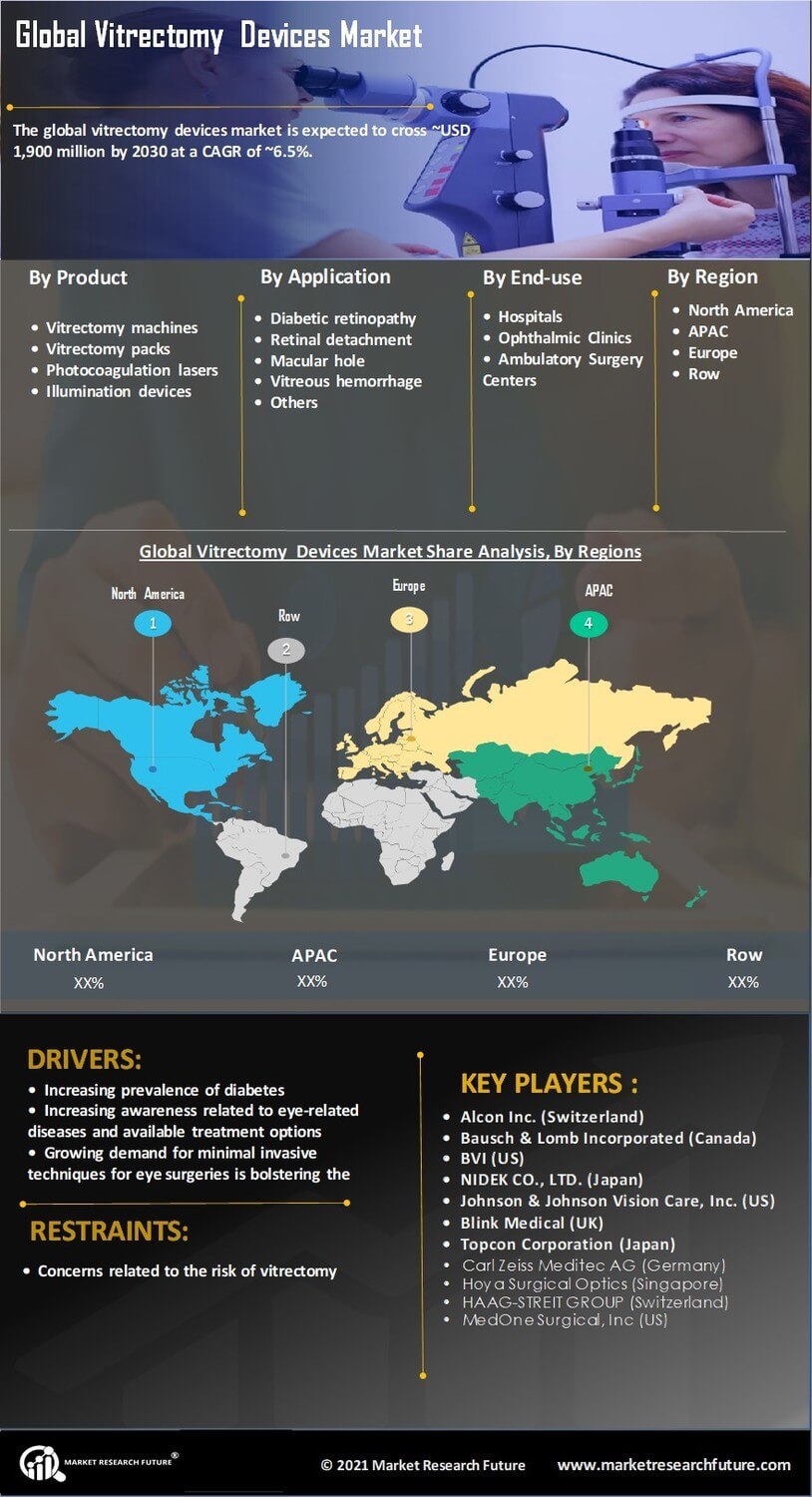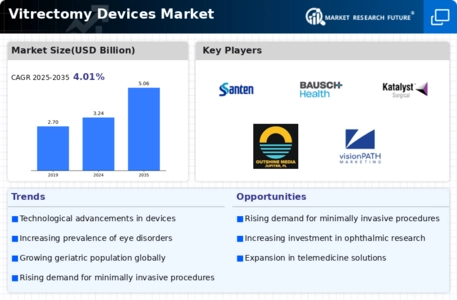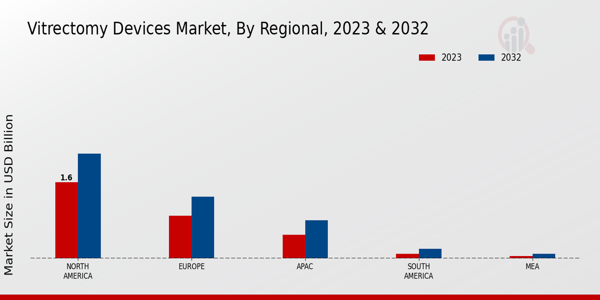Market Growth Projections
The Global Vitrectomy Devices Market Industry is poised for substantial growth, with projections indicating a market value of 3.24 USD Billion in 2024 and an anticipated increase to 5.06 USD Billion by 2035. This growth trajectory suggests a robust compound annual growth rate (CAGR) of 4.14% from 2025 to 2035. Such figures reflect the increasing demand for vitrectomy procedures driven by various factors, including technological advancements, rising healthcare expenditure, and an aging population. The market's expansion is indicative of the evolving landscape of ophthalmic care, where innovations and improved patient outcomes are at the forefront.
Rising Healthcare Expenditure
Increasing healthcare expenditure across various regions is likely to bolster the Global Vitrectomy Devices Market Industry. Governments and private sectors are investing more in healthcare infrastructure, which includes the procurement of advanced surgical devices. For instance, countries in North America and Europe are allocating substantial budgets to enhance ophthalmic care. This trend is evident as healthcare spending is expected to grow at a CAGR of 4.14% from 2025 to 2035, reflecting a commitment to improving patient care. Consequently, this financial support is anticipated to facilitate the adoption of vitrectomy devices, thereby driving market expansion.
Increasing Prevalence of Eye Disorders
The rising incidence of eye disorders globally drives the Global Vitrectomy Devices Market Industry. Conditions such as diabetic retinopathy, retinal detachment, and macular degeneration are becoming more prevalent, particularly in aging populations. For instance, the World Health Organization indicates that the number of people with diabetes is expected to reach 700 million by 2045, significantly increasing the demand for vitrectomy procedures. This growing patient population necessitates advanced surgical interventions, thereby propelling the market forward. As a result, the Global Vitrectomy Devices Market is projected to reach 3.24 USD Billion in 2024, reflecting the urgent need for effective treatment options.
Aging Population and Demographic Shifts
The global demographic shift towards an aging population is a significant factor influencing the Global Vitrectomy Devices Market Industry. As life expectancy increases, age-related eye conditions are becoming more common, necessitating surgical interventions. The United Nations projects that the number of individuals aged 65 and older will double by 2050, leading to a surge in the prevalence of conditions such as cataracts and age-related macular degeneration. This demographic trend is likely to create a sustained demand for vitrectomy procedures, thereby driving the market forward. The implications of this aging population are profound, as they will shape the future landscape of ophthalmic care.
Growing Awareness and Screening Programs
The increasing awareness of eye health and the importance of early detection are pivotal for the Global Vitrectomy Devices Market Industry. Public health initiatives and screening programs are being implemented to educate populations about eye disorders and the benefits of timely intervention. For example, organizations are promoting regular eye examinations, which can lead to early diagnosis and treatment of conditions requiring vitrectomy. This heightened awareness is likely to result in a greater number of patients seeking surgical options, thus fostering market growth. As more individuals become informed about their eye health, the demand for vitrectomy procedures is expected to rise.
Technological Advancements in Surgical Devices
Innovations in vitrectomy devices are transforming surgical practices, which is a key driver for the Global Vitrectomy Devices Market Industry. The introduction of minimally invasive techniques and advanced imaging technologies enhances surgical precision and patient outcomes. For example, the development of 23-gauge vitrectomy systems allows for smaller incisions and quicker recovery times. These advancements not only improve surgical efficiency but also expand the range of treatable conditions. As these technologies continue to evolve, they are expected to contribute to the market's growth, with projections indicating a market value of 5.06 USD Billion by 2035.
















